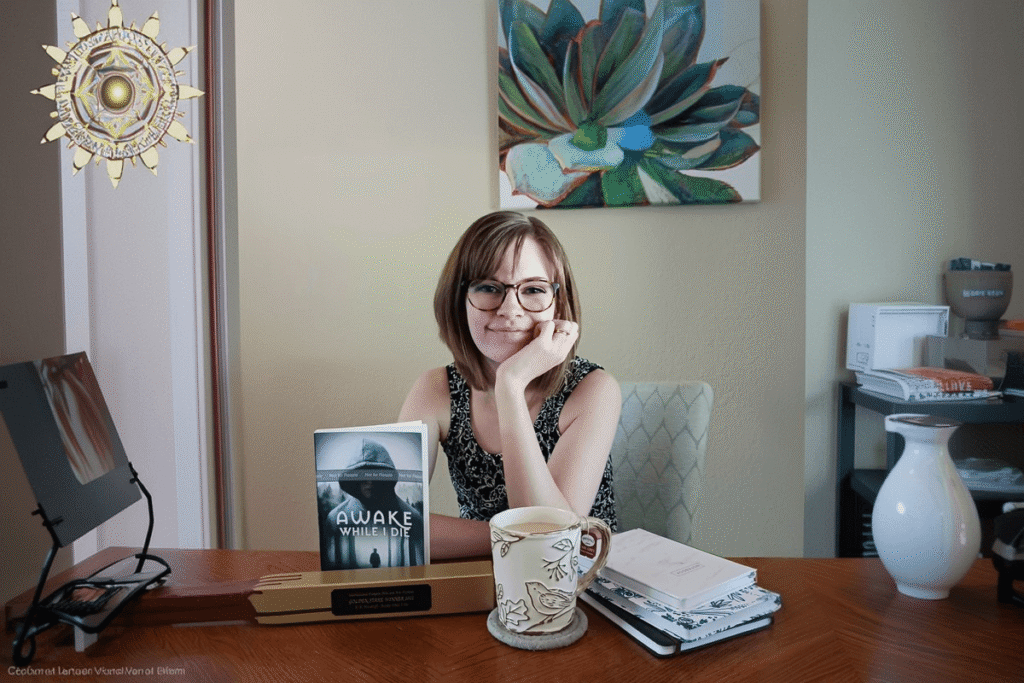PHOTO: R.w. Meek, award-winning author, whose writing masterfully navigates history, psychology, and art, exploring themes of identity, betrayal and artistic redemption.
A Profound Tale Of Creativity, Betrayal, And The Power Of Art
R.w. Meek’s The Dream Collector explores the lives of Freud, van Gogh, and a fictional muse, Sabrine, blending art, history, and psychology into a vivid and emotional narrative.
R.w. Meek, an award-winning novelist and art historian, has masterfully blended history, psychology, and art in his latest work, The Dream Collector. Known for his ability to combine historical accuracy with imaginative storytelling, Meek delves into the intersecting lives of two iconic figures—Sigmund Freud and Vincent van Gogh—through the lens of his luminous and fictional character, Sabrine. Exploring themes of betrayal, abandonment, and the healing power of art, Meek constructs an epic narrative that bridges historical fact with emotional resonance.
At the heart of The Dream Collector, Meek intertwines the lives of Freud and van Gogh in their fledgling years, set against the backdrop of Paris in 1886—a pivotal year for both figures. The book takes readers into profound explorations of creativity, suffering, and the search for identity, with Sabrine serving as the catalyst for much of the plot. Through her relationships with Freud, her therapist, and van Gogh, her lover, Sabrine’s innocence and charm illuminate the vulnerabilities, flaws, and brilliance of these historic personalities.
Meek’s novels combine historical accuracy, emotional depth, and artistic scholarship, creating unforgettable narratives that bridge humanity’s brilliance and frailty.
When asked about the inspiration for The Dream Collector, Meek explained that the coexistence of these two famed individuals in Paris during 1886 fascinated him. “Vincent van Gogh and Sigmund Freud—two of the most famous individuals in the world… their experiences in that momentous year shaped who they became and what they gave us.” Meek’s work artfully grounds itself in both archival research and a novelist’s imagination, weaving a narrative that breathes life into the giants of Impressionist art and psychoanalysis.
The story is divided into two books, Sabrine & Sigmund Freud and Sabrine & Vincent van Gogh, though Meek clarifies that it should not be considered a series. “Both are standalone novels,” he explains. “However, The Dream Collector was conceived as a whole.” Book I focuses on Freud’s early development in Paris, while Book II centers on van Gogh’s tumultuous relationship with Sabrine and his unfolding journey as an artist. These narratives, though independent, converge thematically, bound by the shared themes of artistic passion, mental anguish, and human connection.
Meek‘s meticulous attention to historical detail enriches his storytelling. He incorporates vibrant historical moments—for instance, Freud’s controversial writing on cocaine use and Monet’s hysterical blindness—which are imaginatively reinterpreted through the eyes of fictional protagonist Julie Forette. Julie, the narrator and “dream collector,” contextualizes the ambitions, neuroses, and subconscious desires of the late 19th century’s most famous artists. Meek’s commitment to authenticity extends to his use of van Gogh’s original correspondence with his brother, Theo, many excerpts of which are seamlessly woven into the novel’s dialogue.
As the central figure in both books, Sabrine emerges as a pivotal character. Meek describes her as a “spark to all whom she meets,” while readers have noted her innocence as reminiscent of Alyosha from Dostoevsky’s The Brothers Karamazov, a favorite work of the author. Sabrine mirrors van Gogh’s own feelings of abandonment, as Meek delves into the artistic genius’s self-destructive tendencies. “Vincent perceived himself as a ‘stranger on this earth,’” Meek reflects. “From childhood, he believed himself to be the seed who fell by the wayside.”
Themes of betrayal and abandonment play an essential role in The Dream Collector. Meek aimed to explore the pain and trauma that arise when trust is broken by a loved one. “Can you ever recover from that? If so, how?” he asks. Yet, even as the narrative plunges into the depths of despair, it also celebrates the potential of art to redeem and restore. Meek’s stories remind readers that both the broken and the brilliant share in the fragile threads of human connection.
The story’s emotional gravity is matched by Meek’s scholarly insight into 19th-century art and psychology, which he attributes to his background in art history and an enduring fascination with Impressionism and Post-Impressionism. In creating The Dream Collector, van Gogh’s letters and final days informed key scenes. Meek depicts the artist’s tragic last moments with haunting realism. “And no, no other person took Vincent’s life,” he asserts, dismissing modern debates. “He stepped into Wheatfield’s of Auvers on a beautifully sun-drenched day and aimed a revolver at his heart. He missed, but the damage was done.”
Looking to the future, Meek is adapting The Dream Collector into a screenplay, with dreams of bringing the narrative to the silver screen. He envisions a cast including Saoirse Ronan, Monica Barbaro, Suzanna Son, and LA theater actress Ann Noble. “Mademoiselles, can you hear me?” Meek joked when discussing his dream cast.
With work that lingers in readers’ minds long after the final page, R.w. Meek cements his reputation as a writer who combines historical authenticity with psychological depth. The Dream Collector is a compelling blend of genius, vulnerability, and the restorative power of art—a work destined to inspire audiences for years to come.
Source: Reader’s House Magazine











